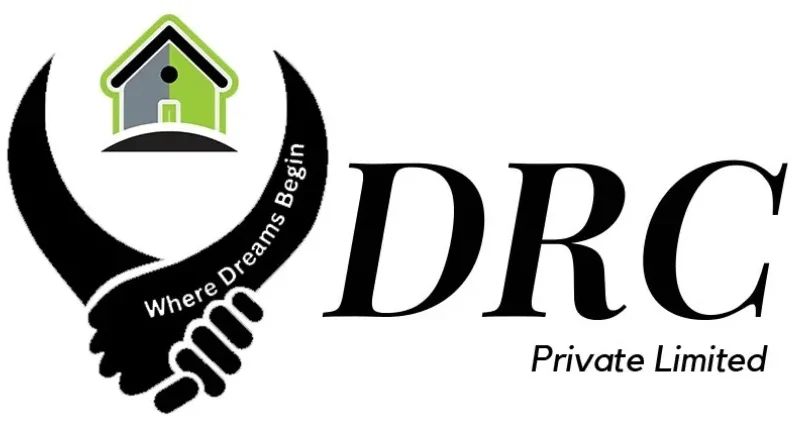We design websites with local and international expertise, to share your property information online and increase sales of your property or project.

| Dimensions | |
| Square Yards | |
| Square Meters | |
| Marlas | |
| Acres |
Digital marketing
Choose the platforms where your target audience is most active (e.g., Instagram, LinkedIn, TikTok, etc.)
What we do?
We can build a strong digital presence, engage your audience, and achieve measurable business growth
Read More
Table of Contents

Best website builder for small business:
Following Best key Features of Website:
(1) User-Friendly Website Builder:
Our intuitive website design & development allows users to easily create and customize their own portfolio websites without any coding knowledge. With drag-and-drop functionality and Customizable templates, users can quickly create a professional-looking site that reflects their unique style and personality.
(2) Responsive Design:
All portfolio websites built on our platform are mobile optimized so they look great and work seamlessly on smartphones and tablets. This responsiveness is essential to reaching and engaging with audiences across devices and screen sizes.
(3) Custom Templates:
We offer a wide selection of custom templates for different industries and creative styles. Whether users are showing photographs, graphic designs, writing samples, or other types of work, they can find a template that suits their needs and preferences.
(4) Media Gallery & Showcase::
Our website design services platform supports multimedia content, allowing users to create stunning galleries and showcases to effectively showcase their work. From high-resolution images and videos to audio clips and interactive projects, users can showcase their talents in the best possible light.
(5) Integrated blogging platform:
In addition to portfolios, users can use our integrated blogging website design services platform to share ideas, updates, and behind-the-scenes stories about their work. Blogging not only helps users establish themselves as industry experts, but also drives traffic to their portfolio websites.
(6) Contact forms and lead generation:
We provide built-in contact forms and lead generation tools that allow clients to collect inquiries, applications and leads through their portfolio websites. This streamlined communication process helps users interact more effectively with customers and partners.
(7) Search Engine Optimization (SEO) Tools:
Our platform includes SEO tools and features that help users optimize their portfolio websites for search engines. By improving visibility and ranking in search results, users can attract more organic traffic and reach a wider audience of potential customers and members.
(8) Analytics and ideas:
Users can track the performance of their portfolio websites using built-in analytics and analytics. From visitor demographics and engagement rates to traffic sources and popular content, this information allows users to make informed decisions and effectively optimize their online presence.
(9) Secure hosting and support:
We offer secure hosting and reliable technical support to ensure clients’ portfolio business website are always available and running smoothly. Our team is ready to assist customers with any questions, technical issues, or customization needs they may have along the way.
Pagespeed insights:
PageSpeed Insights is a Google tool that analyzes the performance of web pages on both mobile and desktop devices. In addition it provides information and recommendations to improve page loading speed and overall user experience. Here’s how you can use PageSpeed Insights:
Visit the PageSpeed Insights Website:
- Open your web browser and go to the PageSpeed Insights website: PageSpeed Insights.
Enter the URL:
- Enter the URL of the web page you want to analyze into the text field provided on the PageSpeed Insights website.
Run the Analysis:
After entering the URL, click on the “Analyze” button. PageSpeed Insights will then fetch the URL and analyze its performance.
View the Results:
Once the analysis is complete, PageSpeed Insights will display a report containing various metrics and scores related to performance. These metrics may include:
- Field Data: Real-world performance metrics gathered from users who visit the page.
- Lab Data: Performance metrics collected in a controlled lab environment.
- Performance Score: A score out of 100 indicating the overall performance of the page.
- Opportunities: Suggestions for improvements that could enhance page load speed and user experience.
- Diagnostics: Information about specific issues detected during the analysis.
Review Recommendations:
Pay attention to the recommendations provided by PageSpeed Insights. These recommendations are categorized based on their impact on performance and may include optimizations such as:
Minifying CSS, JavaScript, and HTML.
- Compressing images to reduce file size.
- Leveraging browser caching.
- Eliminating render-blocking resources.
- Optimizing server response times.
Implement Improvements:
Review the recommendations and prioritize those that will have the most significant impact on performance. Depending on your level of expertise, you may be able to implement these optimizations yourself, or you may need assistance from a web developer or technical team.
Reanalyze:
After implementing improvements, re-run the analysis using PageSpeed Insights to see if there has been an improvement in performance. Continue iterating and optimizing until you achieve satisfactory results.
What is website design & development:
Website design and development refers to the process involved in creating and creating a website. Although these terms are often used interchangeably, they cover different aspects of the website creation process:
Website Design:
Website design focuses on the visual aspects and user interface of a website. This involves creating the overall look and layout of the site, including elements such as colors, typography, images, and navigation menus. Website designers use design software such as Adobe Photoshop, Sketch, or Figma to create mockups and wireframes that illustrate the website’s structure and design elements. The goal of website design is to create an aesthetically pleasing and user-friendly interface that attracts visitors and effectively communicates the purpose and content of the website.
Web Development:
Web Development includes the technical implementation and functionality of the website. It involves writing the code that will bring the design to life and make the website interactive and functional. Website developers use programming languages such as HTML, CSS, JavaScript, and server-side scripting languages such as PHP, Python, or Ruby to create web pages, create dynamic content, and handle user interactions. Web Development also includes tasks such as database management, server tuning, and optimizing performance and security. The goal of Web Development is to create a functional, responsive, and reliable website that meets the needs of users and achieves its goals.
WordPress website:
A WordPress website is a website built using WordPress, a popular content management system (CMS) and website building platform. WordPress is known for its ease of use, flexibility, and extensibility, making it the preferred choice for millions of websites across a variety of industries, from personal blogs to large corporate websites.
Here’s an overview of what a WordPress website typically includes:
To create a WordPress website, you must first install WordPress on your web server. Many hosting providers offer one-click WordPress installation options, making the process easier. Once installed, you will go through an installation process where you will select a website name, username, password, and other basic settings.
WordPress offers a wide range of pre-designed themes that you can use to customize the look and feel of your website. Themes control the layout, design, and overall look of your site. You can choose a free theme from the WordPress theme directory or purchase a premium theme from third-party providers. Alternatively, you can hire a web designer to create a custom theme for your specific needs.
Once you choose a theme, you can customize it to suit your branding and design preferences. WordPress provides a user-friendly interface for customizing various elements of your website, including colors, fonts, header and footer layouts, etc. You can also add custom CSS or use page builders like Elementor or Divi for more advanced design customization.
With WordPress, you can easily create and manage different types of content, including pages and posts. Pages are typically used for static content such as your home page, About Us page, contact page, etc., whereas Posts are used for dynamic content such as blog posts or news updates. WordPress comes with a built-in editor that allows you to add text, images, videos, and other media to your pages and posts.
Plugins and functionality:
One of the main strengths of WordPress is its extensive plugin ecosystem, which allows you to add additional functionality to your site. There are thousands of free and paid plugins available for WordPress, covering a wide range of features such as SEO optimization, contact forms, e-commerce capabilities, social media integration and much more. You can install and activate plugins to improve the functionality of your WordPress website according to your needs.
Optimizing your WordPress website for performance, speed, and security is essential. This includes tasks such as optimizing images, enabling caching, implementing security measures such as SSL certificates and firewalls, and keeping WordPress core, themes, and plugins up to date. You can also use SEO plugins like Yoast SEO to improve your website’s visibility and ranking in search engines.
Once you have your WordPress website set up and configured, you can launch it for everyone to see. However, building a WordPress website is an ongoing process that requires regular maintenance and updates to ensure its security, performance, and functionality. This includes tasks such as monitoring website analytics, creating backups, updating content, and troubleshooting problems or errors that arise.
HTML Website:
An HTML website is a website created primarily using Hypertext Markup Language (HTML), a standard markup language for creating web pages. Unlike content management systems (CMS) such as WordPress, HTML websites are typically written by hand and do not rely on dynamic content management systems or databases.
Before you start coding, it’s important to plan the structure and layout of your site. This includes identifying the pages you’ll need, organizing the content, and creating a sitemap.
Creating HTML pages:
HTML pages are created using a text editor such as Notepad, Sublime Text, or Visual Studio Code. Each page is saved with the file extension “.html”. HTML is used to define the structure and content of a web page, including headings, paragraphs, lists, links, images, and other elements.
Styling with CSS:
While HTML defines the structure and content of a web page, Cascading Style Sheets (CSS) are used to control presentation and appearance. CSS allows you to apply styles such as color, font, spacing, and layout to HTML elements. You can write CSS code directly in your HTML file using the <style> tag or by linking to an external CSS file.
Adding interactivity using JavaScript:
JavaScript can be used to add interactivity and dynamic behavior to your HTML site. Common uses of JavaScript include form validation, interactive menus, image sliders, and other client-side scripting tasks. You can include JavaScript code directly in your HTML file using the <script> tag or links to external JavaScript files.
Testing and Debugging:
It’s important to test your HTML site on different web browsers and devices to ensure compatibility and responsiveness. You’ll also need to troubleshoot any issues that arise, such as broken links, configuration inconsistencies, or script errors.


